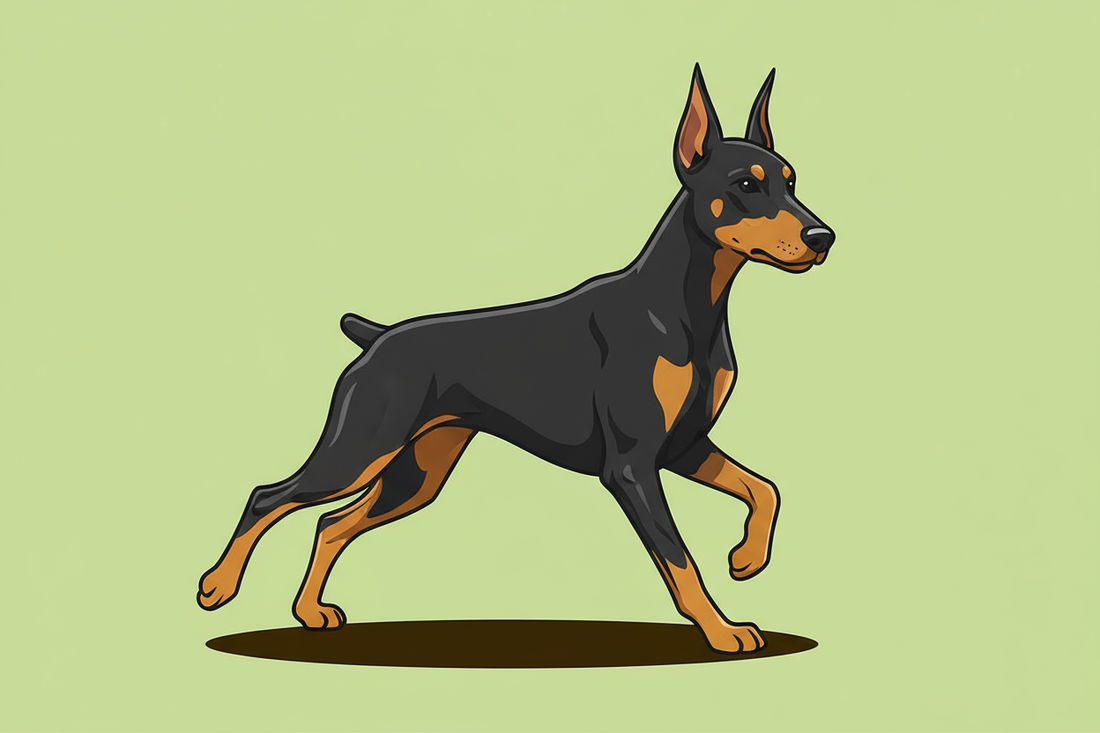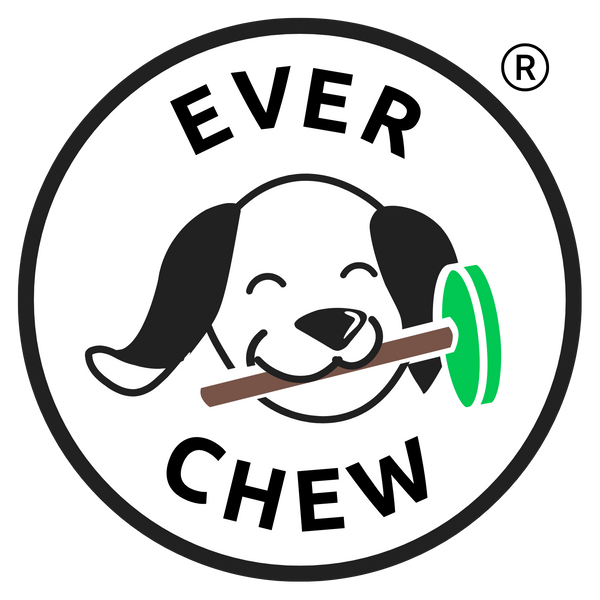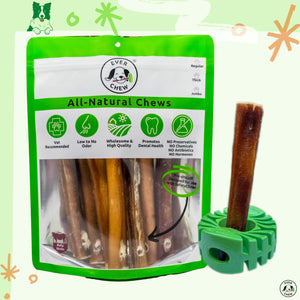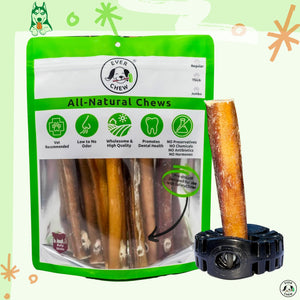Doberman Pinschers: A Guide to Chewing Bully Sticks

by Kirby Kendall (Inventor of EverChew)
Dobermans are sleek, powerful, and highly intelligent working dogs. These alert, athletic guardians have a protective instinct that made them legendary in protection sports, military roles, and family security. But with all that intensity and control, Dobermans need a way to unwind and satisfy their natural chewing drive on the right solution (EverChew bully sticks!).
Strong Jaws with Well-Balanced Bite Mechanics
Dobies are mesocephalic—dogs with proportionally balanced, wedge-shaped skulls. This design gives them a big advantage: excellent leverage for their jaw mechanics, combined with a strong, efficient bite.
Dobermans generate a bite force estimated in the 228–280 PSI range, which comfortably competes with other working breeds. Thanks to their jaw structure, their teeth fit well without the crowding issues of flat-faced breeds. They also have near-perfect scissor-bite alignment, meaning their upper teeth neatly overlap their lower ones for maximum efficiency.
In short—Which EverChew Holder?
Dobermans will usually do fine starting with the green plus holder if they’re a puppy, an older dog, or a softer chewer. But let’s be real—many Dobermans have serious jaw power and determination, which means the indestructible black nylon holder is the smarter choice for their chewing style.
Natural Chewing Machines with Working Dog Energy
Your Dobie is a natural, determined chewer. Chewing helps keep their teeth in good shape, relieves stress, prevents boredom, and gives their working-bred jaws a workout. Bred as energetic protectors, they’re literally programmed to use their mouths to grip, pull, and release tension.
Puppy Phase (8 weeks – 8 months): Dobermanns chew heavily during teething, peaking between 3–6 months. During this time, they’re not just exploring—they’re actively soothing sore gums as their adult teeth come in.
Adult Phase (8+ months): Once past the teething peak, most of the super-destructive chewing tapers around 8–12 months. However, Dobermans remain steady chewers throughout life, often gnawing with the sides of their mouths where their strongest premolars and molars sit.
Understanding Bully Stick Advantages and Why a Holder is Essential
Dobermans chew for all the right reasons: dental health, mental focus, stress release, and jaw exercise. Bully sticks are perfect because they’re 100% protein (similar to beef jerky) and have the perfect texture—firm at first but softening as they work on them. This scraping action helps clean the well-spaced teeth of mesocephalic breeds like Dobermans.
The only problem? Once the bully stick gets short, Dobermans’ determination means they’ll often try to swallow it whole. While sometimes it passes through, other times it can choke them or cause a blockage—an emergency situation no one wants. Their strong bite actually makes them more likely to snap and gulp. That’s why a holder is non-negotiable.
Choose the Medium Dog Plus holder if your Doberman:
- Is a teething puppy (the green material works well with needle-sharp puppy teeth).
- Is a senior with more fragile teeth where nylon might risk a break.
- Just happens to be a lighter, non-destructive chewer (rare, but they exists).
Consider the Nylon SuperChew if your Doberman:
- Weighs 50+ pounds (most do) and has strong chewing habits.
- Is aggressive or relentless in chewing.
- Has trashed other toys regularly.
- Has a history of doing fine with other nylon toys.
Skip the Small Dog holder for Dobermans.


